glArrayType = typeof Float32Array !="undefined" ? Float32Array : ( typeof WebGLFloatArray != "undefined" ? WebGLFloatArray : Array );
function IdentityMat44() {
var m = new glArrayType(16);
m[0] = 1; m[1] = 0; m[2] = 0; m[3] = 0;
m[4] = 0; m[5] = 1; m[6] = 0; m[7] = 0;
m[8] = 0; m[9] = 0; m[10] = 1; m[11] = 0;
m[12] = 0; m[13] = 0; m[14] = 0; m[15] = 1;
return m;
};
function RotateAxis(matA, angRad, axis) {
var aMap = [ [1, 2], [2, 0], [0, 1] ];
var a0 = aMap[axis][0], a1 = aMap[axis][1];
var sinAng = Math.sin(angRad), cosAng = Math.cos(angRad);
var matB = new glArrayType(16);
for ( var i = 0; i < 16; ++ i ) matB[i] = matA[i];
for ( var i = 0; i < 3; ++ i ) {
matB[a0*4+i] = matA[a0*4+i] * cosAng + matA[a1*4+i] * sinAng;
matB[a1*4+i] = matA[a0*4+i] * -sinAng + matA[a1*4+i] * cosAng;
}
return matB;
}
function Cross( a, b ) { return [ a[1] * b[2] - a[2] * b[1], a[2] * b[0] - a[0] * b[2], a[0] * b[1] - a[1] * b[0], 0.0 ]; }
function Dot( a, b ) { return a[0]*b[0] + a[1]*b[1] + a[2]*b[2]; }
function Normalize( v ) {
var len = Math.sqrt( v[0] * v[0] + v[1] * v[1] + v[2] * v[2] );
return [ v[0] / len, v[1] / len, v[2] / len ];
}
var Camera = {};
Camera.create = function() {
this.pos = [0, 1.5, 0.0];
this.target = [0, 0, 0];
this.up = [0, 0, 1];
this.fov_y = 90;
this.vp = [800, 600];
this.near = 0.5;
this.far = 100.0;
}
Camera.Perspective = function() {
var fn = this.far + this.near;
var f_n = this.far - this.near;
var r = this.vp[0] / this.vp[1];
var t = 1 / Math.tan( Math.PI * this.fov_y / 360 );
var m = IdentityMat44();
m[0] = t/r; m[1] = 0; m[2] = 0; m[3] = 0;
m[4] = 0; m[5] = t; m[6] = 0; m[7] = 0;
m[8] = 0; m[9] = 0; m[10] = -fn / f_n; m[11] = -1;
m[12] = 0; m[13] = 0; m[14] = -2 * this.far * this.near / f_n; m[15] = 0;
return m;
}
Camera.LookAt = function() {
var mz = Normalize( [ this.pos[0]-this.target[0], this.pos[1]-this.target[1], this.pos[2]-this.target[2] ] );
var mx = Normalize( Cross( this.up, mz ) );
var my = Normalize( Cross( mz, mx ) );
var tx = Dot( mx, this.pos );
var ty = Dot( my, this.pos );
var tz = Dot( [-mz[0], -mz[1], -mz[2]], this.pos );
var m = IdentityMat44();
m[0] = mx[0]; m[1] = my[0]; m[2] = mz[0]; m[3] = 0;
m[4] = mx[1]; m[5] = my[1]; m[6] = mz[1]; m[7] = 0;
m[8] = mx[2]; m[9] = my[2]; m[10] = mz[2]; m[11] = 0;
m[12] = tx; m[13] = ty; m[14] = tz; m[15] = 1;
return m;
}
var ShaderProgram = {};
ShaderProgram.Create = function( shaderList ) {
var shaderObjs = [];
for ( var i_sh = 0; i_sh < shaderList.length; ++ i_sh ) {
var shderObj = this.CompileShader( shaderList[i_sh].source, shaderList[i_sh].stage );
if ( shderObj == 0 )
return 0;
shaderObjs.push( shderObj );
}
var progObj = this.LinkProgram( shaderObjs )
if ( progObj != 0 ) {
progObj.attribIndex = {};
var noOfAttributes = gl.getProgramParameter( progObj, gl.ACTIVE_ATTRIBUTES );
for ( var i_n = 0; i_n < noOfAttributes; ++ i_n ) {
var name = gl.getActiveAttrib( progObj, i_n ).name;
progObj.attribIndex[name] = gl.getAttribLocation( progObj, name );
}
progObj.unifomLocation = {};
var noOfUniforms = gl.getProgramParameter( progObj, gl.ACTIVE_UNIFORMS );
for ( var i_n = 0; i_n < noOfUniforms; ++ i_n ) {
var name = gl.getActiveUniform( progObj, i_n ).name;
progObj.unifomLocation[name] = gl.getUniformLocation( progObj, name );
}
}
return progObj;
}
ShaderProgram.AttributeIndex = function( progObj, name ) { return progObj.attribIndex[name]; }
ShaderProgram.UniformLocation = function( progObj, name ) { return progObj.unifomLocation[name]; }
ShaderProgram.Use = function( progObj ) { gl.useProgram( progObj ); }
ShaderProgram.SetUniformI1 = function( progObj, name, val ) { if(progObj.unifomLocation[name]) gl.uniform1i( progObj.unifomLocation[name], val ); }
ShaderProgram.SetUniformF1 = function( progObj, name, val ) { if(progObj.unifomLocation[name]) gl.uniform1f( progObj.unifomLocation[name], val ); }
ShaderProgram.SetUniformF2 = function( progObj, name, arr ) { if(progObj.unifomLocation[name]) gl.uniform2fv( progObj.unifomLocation[name], arr ); }
ShaderProgram.SetUniformF3 = function( progObj, name, arr ) { if(progObj.unifomLocation[name]) gl.uniform3fv( progObj.unifomLocation[name], arr ); }
ShaderProgram.SetUniformF4 = function( progObj, name, arr ) { if(progObj.unifomLocation[name]) gl.uniform4fv( progObj.unifomLocation[name], arr ); }
ShaderProgram.SetUniformM33 = function( progObj, name, mat ) { if(progObj.unifomLocation[name]) gl.uniformMatrix3fv( progObj.unifomLocation[name], false, mat ); }
ShaderProgram.SetUniformM44 = function( progObj, name, mat ) { if(progObj.unifomLocation[name]) gl.uniformMatrix4fv( progObj.unifomLocation[name], false, mat ); }
ShaderProgram.CompileShader = function( source, shaderStage ) {
var shaderScript = document.getElementById(source);
if (shaderScript) {
source = "";
var node = shaderScript.firstChild;
while (node) {
if (node.nodeType == 3) source += node.textContent;
node = node.nextSibling;
}
}
var shaderObj = gl.createShader( shaderStage );
gl.shaderSource( shaderObj, source );
gl.compileShader( shaderObj );
var status = gl.getShaderParameter( shaderObj, gl.COMPILE_STATUS );
if ( !status ) alert(gl.getShaderInfoLog(shaderObj));
return status ? shaderObj : 0;
}
ShaderProgram.LinkProgram = function( shaderObjs ) {
var prog = gl.createProgram();
for ( var i_sh = 0; i_sh < shaderObjs.length; ++ i_sh )
gl.attachShader( prog, shaderObjs[i_sh] );
gl.linkProgram( prog );
status = gl.getProgramParameter( prog, gl.LINK_STATUS );
if ( !status ) alert("Could not initialise shaders");
gl.useProgram( null );
return status ? prog : 0;
}
var VertexBuffer = {};
VertexBuffer.Create = function( attributes, indices ) {
var buffer = {};
buffer.buf = [];
buffer.attr = []
for ( var i = 0; i < attributes.length; ++ i ) {
buffer.buf.push( gl.createBuffer() );
buffer.attr.push( { size : attributes[i].attrSize, loc : attributes[i].attrLoc } );
gl.bindBuffer( gl.ARRAY_BUFFER, buffer.buf[i] );
gl.bufferData( gl.ARRAY_BUFFER, new Float32Array( attributes[i].data ), gl.STATIC_DRAW );
}
buffer.inx = gl.createBuffer();
gl.bindBuffer( gl.ELEMENT_ARRAY_BUFFER, buffer.inx );
gl.bufferData( gl.ELEMENT_ARRAY_BUFFER, new Uint16Array( indices ), gl.STATIC_DRAW );
buffer.inxLen = indices.length;
gl.bindBuffer( gl.ARRAY_BUFFER, null );
gl.bindBuffer( gl.ELEMENT_ARRAY_BUFFER, null );
return buffer;
}
VertexBuffer.Draw = function( bufObj ) {
for ( var i = 0; i < bufObj.buf.length; ++ i ) {
gl.bindBuffer( gl.ARRAY_BUFFER, bufObj.buf[i] );
gl.vertexAttribPointer( bufObj.attr[i].loc, bufObj.attr[i].size, gl.FLOAT, false, 0, 0 );
gl.enableVertexAttribArray( bufObj.attr[i].loc );
}
gl.bindBuffer( gl.ELEMENT_ARRAY_BUFFER, bufObj.inx );
gl.drawElements( gl.TRIANGLES, bufObj.inxLen, gl.UNSIGNED_SHORT, 0 );
for ( var i = 0; i < bufObj.buf.length; ++ i )
gl.disableVertexAttribArray( bufObj.attr[i].loc );
gl.bindBuffer( gl.ARRAY_BUFFER, null );
gl.bindBuffer( gl.ELEMENT_ARRAY_BUFFER, null );
}
function drawScene(){
var canvas = document.getElementById( "camera-canvas" );
Camera.create();
Camera.vp = [canvas.width, canvas.height];
var currentTime = Date.now();
var deltaMS = currentTime - startTime;
var texUnit = 0;
gl.activeTexture( gl.TEXTURE0 + texUnit );
gl.bindTexture( gl.TEXTURE_2D, textureObj );
var mapUnit = 1;
gl.activeTexture( gl.TEXTURE0 + mapUnit );
gl.bindTexture( gl.TEXTURE_2D, normalMapObj );
gl.viewport( 0, 0, canvas.width, canvas.height );
gl.enable( gl.DEPTH_TEST );
gl.clearColor( 0.0, 0.0, 0.0, 1.0 );
gl.clear( gl.COLOR_BUFFER_BIT | gl.DEPTH_BUFFER_BIT );
// set up draw shader
ShaderProgram.Use( progDraw );
ShaderProgram.SetUniformM44( progDraw, "u_projectionMat44", Camera.Perspective() );
ShaderProgram.SetUniformM44( progDraw, "u_viewMat44", Camera.LookAt() );
var modelMat = IdentityMat44()
modelMat = RotateAxis( modelMat, 105.0 * Math.PI / 180.0, 0 );
ShaderProgram.SetUniformM44( progDraw, "u_modelMat44", modelMat );
ShaderProgram.SetUniformI1( progDraw, "tex", texUnit );
ShaderProgram.SetUniformI1( progDraw, "normal_map", mapUnit );
// draw scene
var chg_tang = document.getElementById( "change_tangent" ).checked;
if ( chg_tang )
VertexBuffer.Draw( bufPlane2 );
else
VertexBuffer.Draw( bufPlane );
}
var Texture = {};
Texture.HandleLoadedTexture2D = function( image, texture, flipY ) {
gl.activeTexture( gl.TEXTURE0 );
gl.bindTexture( gl.TEXTURE_2D, texture );
gl.texImage2D( gl.TEXTURE_2D, 0, gl.RGBA, gl.RGBA, gl.UNSIGNED_BYTE, image );
if ( flipY != undefined && flipY == true )
gl.pixelStorei( gl.UNPACK_FLIP_Y_WEBGL, true );
gl.texParameteri( gl.TEXTURE_2D, gl.TEXTURE_MAG_FILTER, gl.LINEAR );
gl.texParameteri( gl.TEXTURE_2D, gl.TEXTURE_MIN_FILTER, gl.LINEAR );
gl.texParameteri( gl.TEXTURE_2D, gl.TEXTURE_WRAP_S, gl.REPEAT );
gl.texParameteri( gl.TEXTURE_2D, gl.TEXTURE_WRAP_T, gl.REPEAT );
gl.bindTexture( gl.TEXTURE_2D, null );
return texture;
}
Texture.LoadTexture2D = function( name ) {
var texture = gl.createTexture();
texture.image = new Image();
texture.image.setAttribute('crossorigin', 'anonymous');
texture.image.onload = function () {
Texture.HandleLoadedTexture2D( texture.image, texture, true )
}
texture.image.src = name;
return texture;
}
var gl;
var progDraw;
var bufCube = {};
var bufTorus = {};
function sceneStart() {
var canvas = document.getElementById( "camera-canvas");
var vp = [canvas.width, canvas.height];
gl = canvas.getContext( "experimental-webgl" );
if ( !gl )
return;
progDraw = ShaderProgram.Create(
[ { source : "draw-shader-vs", stage : gl.VERTEX_SHADER },
{ source : "draw-shader-fs", stage : gl.FRAGMENT_SHADER }
] );
progDraw.inPos = gl.getAttribLocation( progDraw, "pos" );
progDraw.inNV = gl.getAttribLocation( progDraw, "norm" );
progDraw.inTV = gl.getAttribLocation( progDraw, "tangent" );
progDraw.inTex = gl.getAttribLocation( progDraw, "tex_pos" );
if ( progDraw == 0 )
return;
var planPosData = [-1.0, -1.0, 0.0, 1.0, -1.0, 0.0, 1.0, 1.0, 0.0, -1.0, 1.0, 0.0];
var planNVData = [ 0.0, 0.0, 1.0, 0.0, 0.0, 1.0, 0.0, 0.0, 1.0, 0.0, 0.0, 1.0];
var planTVData = [ 1.0, 0.0, 0.0, 1.0, 0.0, 0.0, 1.0, 0.0, 0.0, 1.0, 0.0, 0.0];
var planTexData = [ 0.0, 0.0, 0.0, 1.0, 1.0, 1.0, 1.0, 0.0 ];
var planInxData = [0,1,2,0,2,3];
bufPlane = VertexBuffer.Create(
[ { data : planPosData, attrSize : 3, attrLoc : progDraw.inPos },
{ data : planNVData, attrSize : 3, attrLoc : progDraw.inNV },
{ data : planTVData, attrSize : 3, attrLoc : progDraw.inTV },
{ data : planTexData, attrSize : 2, attrLoc : progDraw.inTex } ],
planInxData );
var planPosData2 = [-1.0, -1.0, 0.0, 1.0, -1.0, 0.0, 1.0, 1.0, 0.0, -1.0, 1.0, 0.0];
var planNVData2 = [ 0.0, 0.0, 1.0, 0.0, 0.0, 1.0, 0.0, 0.0, -1.0, 0.0, 0.0, 1.0];
//var planTVData2 = [ 1.0, 0.0, 0.0, 1.0, 0.0, 0.0, 1.0, 0.0, 0.0, 1.0, 0.0, 0.0];
var planTVData2 = [ 1.0, 0.0, 0.0, 1.0, 0.0, 0.0, 1.0, 0.0, 0.0, 1.0, 0.0, 0.0];
var planTexData2 = [ 0.0, 0.0, 0.0, 1.0, 1.0, 1.0, 1.0, 0.0 ];
var planInxData2 = [0,1,2,0,2,3];
bufPlane2 = VertexBuffer.Create(
[ { data : planPosData2, attrSize : 3, attrLoc : progDraw.inPos },
{ data : planNVData2, attrSize : 3, attrLoc : progDraw.inNV },
{ data : planTVData2, attrSize : 3, attrLoc : progDraw.inTV },
{ data : planTexData2, attrSize : 2, attrLoc : progDraw.inTex } ],
planInxData2 );
textureObj = Texture.LoadTexture2D( "https://raw.githubusercontent.com/Rabbid76/graphics-snippets/master/resource/texture/Gominolas.png" );
normalMapObj = Texture.LoadTexture2D( "https://raw.githubusercontent.com/Rabbid76/graphics-snippets/master/resource/texture/GominolasBump.png" );
startTime = Date.now();
setInterval(drawScene, 50);
}
<script id="draw-shader-vs" type="x-shader/x-vertex">
precision mediump float;
attribute vec4 pos;
attribute vec3 norm;
attribute vec3 tangent;
attribute vec2 tex_pos;
varying vec2 v_tex_pos;
varying vec3 v_light_dir_tansp;
// ADDED -----
varying vec3 v_tangent_vsp;
varying vec3 v_binoraml_vsp;
varying vec3 v_norm_vsp;
// ADDED -----
//uniform mat4 view;
//uniform mat4 view_projection;
// ADDED -----
uniform mat4 u_projectionMat44;
uniform mat4 u_viewMat44;
uniform mat4 u_modelMat44;
// ADDED -----
//const vec3 light_pos = vec3(50.0, 25.0, 50.0);
// ADDED -----
const vec3 light_pos = vec3(0.0, 0.0, 0.25);
// ADDED -----
// ADDED -----
mat3 transpose(mat3 m)
{
mat3 tm = m;
for(int i = 0; i < 3; ++i)
{
for(int j = 0; j < 3; ++j)
tm[j][i]=m[i][j];
}
return tm;
}
// ADDED -----
void main() {
// ADDED -----
mat4 view = u_viewMat44 * u_modelMat44;
mat4 view_projection = u_projectionMat44 * view;
// ADDED -----
vec3 norm_viewsp = mat3(view) * normalize(norm);
vec3 tangent_viewsp = mat3(view) * normalize(tangent);
vec3 bitangent_viewsp = cross(tangent_viewsp, norm_viewsp);
mat3 tbn = transpose(mat3(tangent_viewsp, bitangent_viewsp, norm_viewsp));
vec3 light_dir = light_pos - pos.xyz;
vec3 light_dir_viewsp = mat3(view) * light_dir;
v_tex_pos = tex_pos;
v_light_dir_tansp = tbn * light_dir_viewsp;
gl_Position = view_projection * pos;
// ADDED -----
v_tangent_vsp = tangent_viewsp;
v_binoraml_vsp = bitangent_viewsp;
v_norm_vsp = norm_viewsp;
// ADDED -----
}
</script>
<script id="draw-shader-fs" type="x-shader/x-fragment">
precision mediump float;
varying vec2 v_tex_pos;
varying vec3 v_light_dir_tansp;
// ADDED -----
varying vec3 v_tangent_vsp;
varying vec3 v_binoraml_vsp;
varying vec3 v_norm_vsp;
// ADDED -----
uniform sampler2D tex;
uniform sampler2D normal_map;
void main() {
vec3 norm = texture2D(normal_map, v_tex_pos).rgb * 2.0 - 1.0;
float diffuse = dot(normalize(norm), normalize(v_light_dir_tansp));
diffuse = clamp(diffuse, 0.0, 1.0);
gl_FragColor = texture2D(tex, v_tex_pos) * diffuse;
// ADDED -----
vec4 texColor = texture2D(tex, v_tex_pos);
gl_FragColor = vec4( texColor.rgb * diffuse * 2.0, 1.0 );
//gl_FragColor = vec4(abs(v_tangent_vsp), 1.0);
//gl_FragColor = vec4(abs(v_binoraml_vsp), 1.0);
//gl_FragColor = vec4(abs(v_norm_vsp), 1.0);
//gl_FragColor = vec4(texture2D(tex, v_tex_pos).rgb, 1.0);
//gl_FragColor = vec4(texture2D(normal_map, v_tex_pos).rgb, 1.0);
// ADDED -----
}
</script>
<body onload="sceneStart();">
<div style="margin-left: 520px;">
<div style="float: right; width: 100%; background-color: #CCF;">
<form name="inputs">
<table>
<tr> <td> change tangent </td>
<td> <input type="checkbox" id="change_tangent"/>
</td> </tr>
</table>
</form>
</div>
<div style="float: right; width: 520px; margin-left: -520px;">
<canvas id="camera-canvas" style="border: none;" width="512" height="512"></canvas>
</div>
<div style="clear: both;"></div>
</div>
</body>



